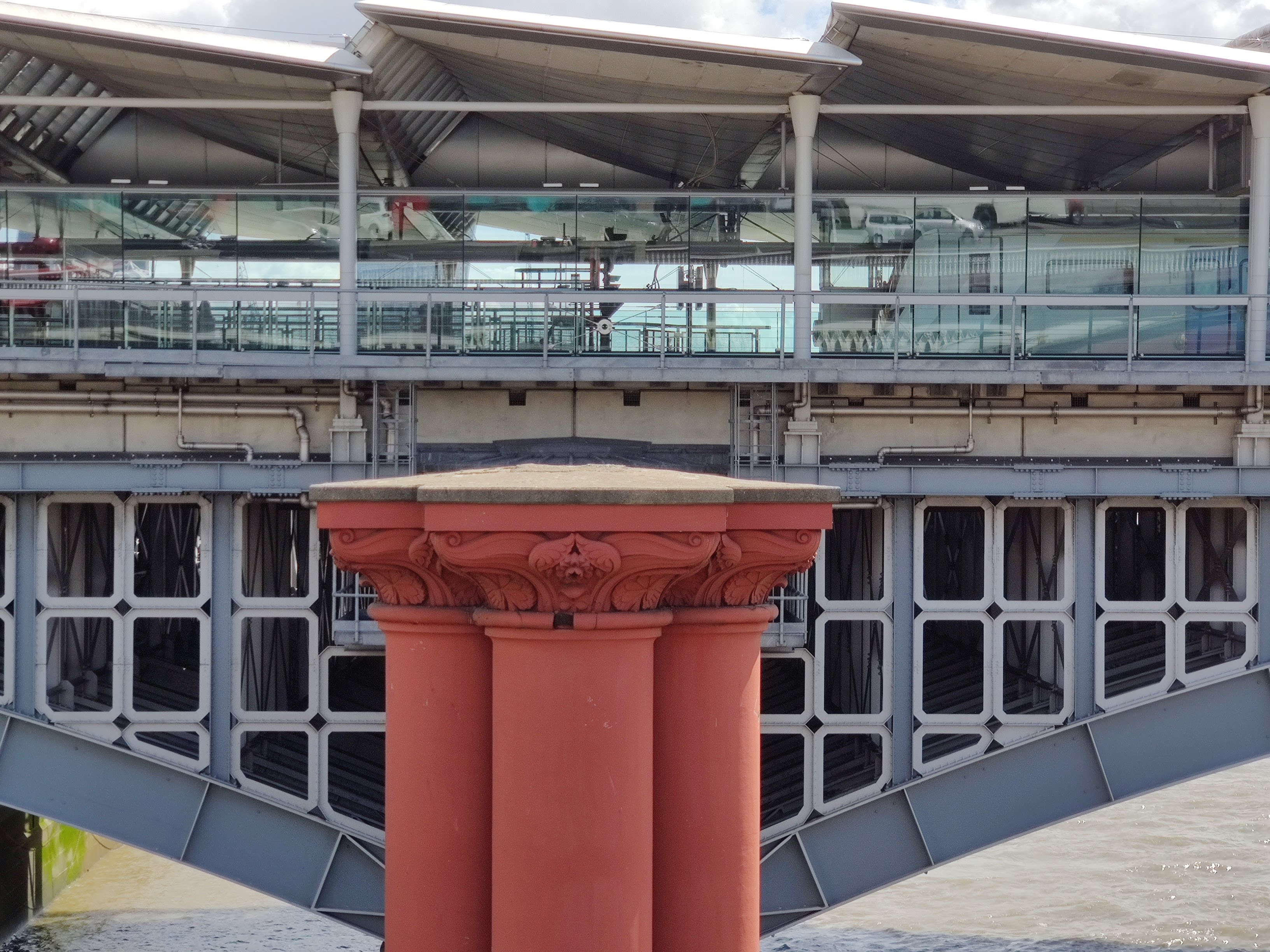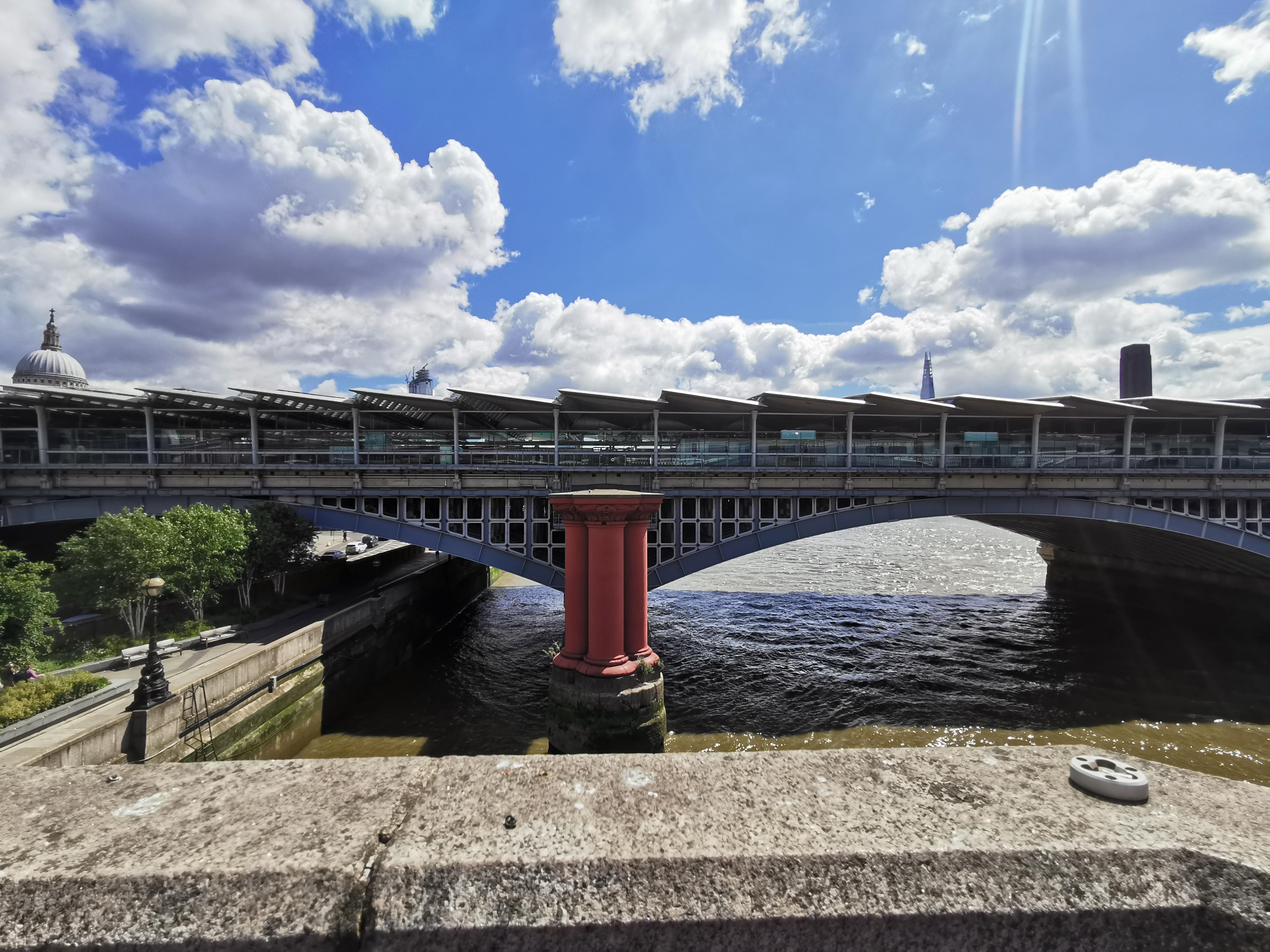OnePlus 7 Pro vs Huawei P30: the ultimate camera test
How do the snappers compare?

Any smartphone can take a picture, but only the best handsets can take a great picture, and the OnePlus 7 Pro and Huawei P30 are two of the most high-end devices for photography.
Each has three rear snappers – one standard, one ultra-wide, and one for long distance pictures – and they also come with an AI scene optimization tool to take the very best pictures possible.
But which is the absolute best? It's a hard question to answer, so instead of picking a phone, we took them both out on a few adventures, so we can compare pictures taken with each of the devices.
These are the results of the test. The images you see below are of the OnePlus 7 Pro – click on the arrow on each image to see the Huawei P30 equivalent.
A word on the cameras
The OnePlus 7 Pro has a 48MP main camera, joined by a 16MP ultra-wide snapper and an 8MP sensor with telephoto lens that supports up to 3x optical zoom.
The Huawei P30 only has a 40MP main sensor, and like the OnePlus phone it has a 16MP ultra-wide lens and 8MP telephoto with 3x optical zoom.
The main difference between the two cameras is this first sensor, as the OnePlus 7 Pro has a slightly better megapixel count, but you won't necessarily notice that in many pictures taken – and it's really the scene optimization software that does a lot of the work too.
Sign up for breaking news, reviews, opinion, top tech deals, and more.
'Normal' photos

This photo, taken from shade, is slightly dark, but you can still make out all the details. The background images are crisp and defined too.

Look at the background to the right – the silver car and beige of the building are rather pale. The actual bikes and frames are a little lighter than the OnePlus photo too, which makes it seem a little more dynamic.
There wasn't a huge amount of difference between 'normal' pictures taken – by that we mean, at 1x zoom with no effects or filters.
The OnePlus 7 Pro photo was a tiny bit darker, but in general the pictures were very similar, both in terms of color range and quality, and the actual field of view and depth.
Zoomed photos

The colors seem a little unsaturated in this picture, but not hugely so. This actually seems like a good thing – you can see more detail on the bridge.

The colors are more vivid here than in the OnePlus, but it's a little dark too. The quality is clear though, and the depth of field feels palatable.

The Huawei P30's 30x zoom doesn't take beautiful pictures, but at least you can zoom in that far, unlike the OnePlus 7 Pro.
When we took pictures at 3x zoom, which is the optical zoom limit for both phones, the Huawei P30's had more vibrant colors and a bigger contrast between the dark subject and light background – but that's perhaps not the greatest thing, as details and complexity was lost.
Of course if you want insane levels of zoom the P30 is the best answer though, as its 30x zoom will get you as much pixellated glory as you want.
Ultra-wide photos

The colors are a little pale in this shot, which is most noticeable when compared to the P30's similar image. The field of view is similar to that of the P30 too, but it feels a little less zoomed-in.

Compared to the zoomed shot, the sky is a lot brighter in this picture, and a lot more blue. The picture captures about the same field of view as the OnePlus phone, but with notably more vivid colors.
The Huawei P30's ultra-wide photo is shocking – look at all that blue sky! Not only is it unprecedented for London, it's quite a change from the limited blue-ness of the zoomed pictures.
The OnePlus 7 Pro's photo is a little paler, both in terms of the sky and the bridge, but that means, like the zoomed picture, you get a lot more detail.
Both handsets have roughly the same field of view in these shots though, so are neck-and-neck in that regard.
Macro photos

The darkness of the cracks in the rocks contrasts well with the light rock itself, so you can see the depth quite well – the background rocks are blurred to an appropriate level too.

The background rocks aren't blurred too much, but you can still see where they stop and the foreground begin. The different tones of the rock are picked up well, if perhaps not the cracks and shadows as much.
These pictures are fairly similar looking, if we're being honest. The background is blurred appropriately for how far away it is, the textures are captured well, and color tones are easy to differentiate between.
The main difference is in how we actually took the pictures – the Huawei P30 felt a tiny bit slower in focusing on the rock than the OnePlus 7 Pro, so it was quicker to take the picture on the latter phone.
Night sight

You can see a fair amount of detail on the left wall, but the right wall is rather dim – and the gondola on the right is indistinguishable from the water.

You can see great detail on the left wall, and all the stains on the right. You can even see textures and shapes through the right window, and quite a way up the alley.
The Huawei P30 has a RYYB sensor, as opposed to the RGB in the OnePlus 7 Pro and most other smartphones. This means it picks up on red-yellow-yellow-blue, instead of red-green-blue, and for the purposes of this camera test, that means it 'sees' light a lot better.
You can tell in the night-sight test, as the Huawei P30's picture has a noticeable amount more detail, and it's brighter all around.
The OnePlus 7 Pro's contrast between light and dark is certainly artistic, but you can't see half of it.
Color perception

The scene optimizer worked a treat for this shot, ignoring the background completely. The colors are bright and distinct, and the strawberry and grape textures are more noticeable.

The fruit looks a little dark in the P30's image – the scene optimizer seemed uncertain what it was looking at, likely due to the background, and so didn't boost the colors as it should have done. The different tones are distinct, however.
For a phone that's meant to have amazing color perception, the Huawei P30 let us down – that's because the scene optimization tool wanted to capture the panoramic shot of the umbrellas as much as it did the fruit, and it couldn't tell what the focus of the picture was.
Because of that the fruit is darker, compared to the OnePlus 7 Pro's pictures, with a lighter and brighter dish. The Pro also knew to apply appropriate background blur, to emphasize this shot.
Capturing greenery

The shine on the leaves is white, not yellow like in the P30's photo, so it looks more like the shrubbery did in real life, as in: rather dull. Compared to the P30, the photo looks a little flat too – look at the leaves on the left for proof.

The leaves show a distinct yellow sheen, which is thanks to the P30's main sensor being RYYB, meaning it 'sees' more yellow. This makes the picture vibrant and colorful, but maybe a little unnatural.
What do you want in a picture – natural and realistic looks, or something a little – ahem – spruced up? (Yes, we know this isn't a spruce.)
The Huawei P30's image has a distinct yellow tone, thanks to the RYYB sensor, which make the whole picture look exciting and vibrant. However that's not how the bush actually looked in real life.
The OnePlus 7 Pro photo is a little dull and lifeless, which is exactly how the bush looked in real life, and while it won't win any 'Bush Photograph of the Year' awards, it's an accurate depiction of the boring bush.
Verdict
The camera test was a mixed bag, and after spending time with the two devices, we really don't have a distinct winner – even over the course of writing up this comparison, and analyzing the picture, our preference kept shifting.
The OnePlus 7 Pro took detailed pictures, that were sometimes a little simplistic, but they benefited from that. They were often a little pale though, compared to the competitor.
The Huawei P30's photos like to toy with color and brightness quite a bit – sometimes that works, and makes vibrant pictures, and other times it robs detail from its subjects.
So there's no 'better' camera phone, and for once we wouldn't actually say 'pick a phone that has features that suit you better'. Instead, it's better to choose a handset whose disadvantages are you can overlook more easily.

Tom Bedford joined TechRadar in early 2019 as a staff writer, and left the team as deputy phones editor in late 2022 to work for entertainment site (and TR sister-site) What To Watch. He continues to contribute on a freelance basis for several sections including phones, audio and fitness.